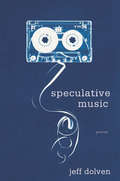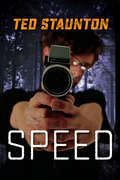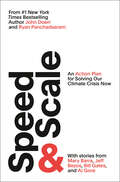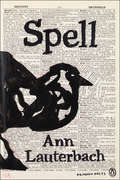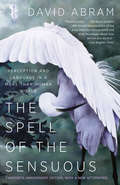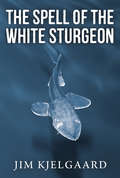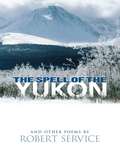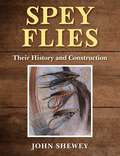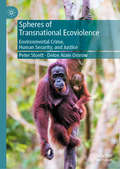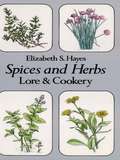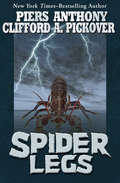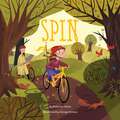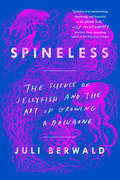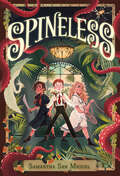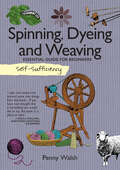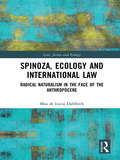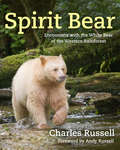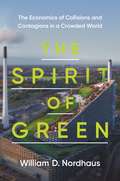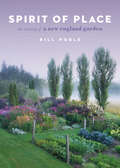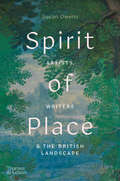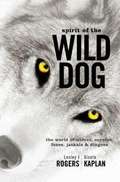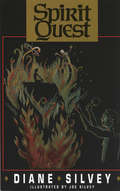- Table View
- List View
Speculative Music
by Jeff DolvenJeff Dolven's poems take the guise of fables, parables, allegories, jokes, riddles, and other familiar forms. So, there is an initial comfort: I remember this, the reader thinks, from the stories of childhood . . . . But wait, something is off. In each poem, an uncanny conceit surprises the form, a highway paved with highwaymen, a school for shame, a family of chairs. Dolven makes these strange wagers with the grace and edgy precision of a metaphysical poet, and there are moments when we might imagine ourselves to be somewhere in the company of Donne or Spenser. Then we encounter "The Invention: A Libretto for Speculative Music," which is, well-surreal, and features a decisively modern, entirely notional score, sung by an inventor and his invention, which (who?) turns out to be a 40s-type piano-perched chanteuse who (which?) somehow knows all the words to the song you never knew you had in you. The daring of this collection is not in replaying the fractured polyphony of our moment. Speculative Music gives us accessible lyrics that still manage to listen in on our echoing interiors. These are poems that promise Frost's "momentary stay against confusion" and, at the same time, provoke a deep, head-shaking wonder.
Speed (The Seven Prequels #5)
by Ted StauntonHow can you liven up a boring camping trip with your grandpa and your younger brother? Spencer has the answer: lose the new cell phone you weren't supposed to bring with you. Add a War of 1812 reenactment, a student film crew, an old flame of Grandpa's, Laura Secord's cowbell and a larcenous hardcore history buff, and you get a weekend that gives Spencer his first taste of independence and maybe a glimpse of his future, by way of the past. In this funny prequel to Jump Cut and Coda, the goofy and creative Spencer gets caught up in a War of 1812 reenactment.
Speed & Scale: An Action Plan for Solving Our Climate Crisis Now
by John Doerr#1 bestselling author and acclaimed venture capitalist John Doerr reveals a sweeping action plan to conquer humanity&’s greatest challenge: climate change.In 2006, John Doerr was moved by Al Gore&’s An Inconvenient Truth and a challenge from his teenage daughter: &“Dad, your generation created this problem. You better fix it.&” Since then, Doerr has searched for solutions to this existential problem—as an investor, an advocate, and a philanthropist. Fifteen years later, despite breakthroughs in batteries, electric vehicles, plant-based proteins, and solar and wind power, global warming continues to get worse. Its impact is all around us: droughts, floods, wildfires, the melting of the polar ice caps. Our world is squarely in a climate crisis and on the brink of a climate disaster. Yet despite our state of emergency, climate change has yet to be tackled with the urgency and ambition it demands. More than ever, we need a clear course of action. What if the goal-setting techniques that powered the rise of today's most innovative organizations were brought to bear on humanity's greatest challenge? Fueled by a powerful tool called Objectives and Key Results (OKRs), SPEED & SCALE offers an unprecedented global plan to cut greenhouse gas emissions before it&’s too late. Used by Google, Bono&’s ONE foundation, and thousands of startups the world over, OKRs have scaled ideas into achievements that changed the world. With clear-eyed realism and an engineer&’s precision, Doerr identifies the measurable OKRs we need to reduce emissions across the board and to arrive by 2050 at net zero—the point where we are no longer adding to the heat-trapping carbon in the atmosphere. By turns pragmatic and inspiring, SPEED & SCALE intersperses Doerr&’s wide-ranging analysis with firsthand accounts from Jeff Bezos, Christiana Figueres, Al Gore, Mary Barra, Bill Gates, and other intrepid policy leaders, entrepreneurs, scientists, and activists. A launchpad for those who are ready to act now, this book is geared to leaders in every walk of life. With a definitive action plan, the latest science, and a rising climate movement on our side, we can still reach net zero before it is too late. But as Doerr reminds us, there is no more time to waste.
Spell (Penguin Poets)
by Ann LauterbachA new collection of provocative work from the author of Or To Begin Again, a finalist for the 2009 National Book Award in PoetryAnn Lauterbach is one of America's most inventive poets, acclaimed for her fierce, sensuous, and intellectually charged work. In her tenth collection, Spell, Lauterbach activates the many meanings of "spell": her sense that the world is under a spell from which it must awaken, to spells of passing weather, to her desire to spell out life's difficulties and wonders, and how sin-gle words (and their etymologies) might inform and enlighten our contemporary condition. In short poems, poem sequences, and a series of "Conversations with Evening," Lauterbach calls upon all her imaginative resources to locate a new hybrid poetics of reality, with wit, urgency, and candor.
The Spell of the Sensuous: Perception and Language in a More-than-Human World
by David AbramAnimal tracks, word magic, the speech of stones, the power of letters, and the taste of the wind all figure prominently in this intellectual tour de force that returns us to our senses and to the sensuous terrain that sustains us. This is a major work of ecological philosophy that startles the senses out of habitual ways of perception.
The Spell of the White Sturgeon: The Spell Of The White Sturgeon, The Lost Wagon, Trading Jeff And His Dog, Double
by Jim KjelgaardThe Spell of the White Sturgeon, first published in 1953, is a classic coming-of-age tale of a young man, Ramsay Cartou, making his way north from Chicago to find work in Wisconsin. However, during his trip on Lake Michigan, his boat sinks during a storm. Ramsay makes it ashore with the help of a horse and arrives at Three Points, ready and eager for the job at a tannery. Cartou cannot force himself to work under the tannery boss and finds refuge with a farmer and eventually learns to be a fisherman on Lake Michigan.
The Spell of the Yukon and Other Poems
by Robert Service"There are strange things done in the midnight sun," declared Robert Service as he related the fulfillment of a dying prospector's request. "The Cremation of Sam McGee" was based on one of many peculiar tales he heard upon his 1904 arrival in the Canadian frontier town of Whitehorse. Less than a decade after the Klondike gold rush, many natives and transplants remained to tell stories of the boom towns that sprang up with the sudden influx of miners, gamblers, barflies, and other fortune-seekers. Service's compelling verses — populated by One-Eyed Mike, Dangerous Dan McGrew, and other colorful characters — recapture the era's venturesome spirit and vitality.In this, his best-remembered work, the "common man's poet" and "Canadian Kipling" presents thirty-four verses that celebrate the rugged natural beauty of the frozen North and the warm humanity of its denizens. Verses include "The Shooting of Dan McGrew" ("A bunch of the boys were whooping it up in the Malamute saloon"), "The Heart of the Sourdough" ("There where the mighty mountains bare their fangs unto the moon"), and "The Call of the Wild" (Have you gazed on naked grandeur where there's nothing else to gaze on"). Generations have fallen under the spell of these poems, which continue to enchant readers of all ages.
Spey Flies, Their History and Construction
by John SheweyThe Definitive Book on Spey Flies Within fly tying, and within steelhead and salmon angling, Spey flies occupy a substantial niche. These flies are exceptionally popular in America, not only on the &“steelhead coast,&” but nationwide among fly tying enthusiasts, and they enjoy a substantial popularity worldwide; their popularity has gained renewed enthusiasm with the latest generation of young tiers and anglers (the private Facebook page &“The Spey Tyer&” has 3,600 members). The author is the world&’s leading authority on the history and tying of Spey flies simply because they caught his fancy in the 1980s and over the years he has conducted more research on the topic by far than anyone else. His vision for this new incarnation of his original Spey Flies (Amato Publications, 2002) includes a tremendous upgrade from the original—an entirely new book, in fact—because he has uncovered so many historical facts, intrigues, people, and flies that have never been compiled in a single volume, or even presented in any form to the interested audience. The original Spey Flies was graphically rich; the new book is far more so.
Spheres of Transnational Ecoviolence: Environmental Crime, Human Security, and Justice
by Peter Stoett Delon Alain OmrowThis book explores violence against the environment within the broad scope of transnational environmental crime (TEC): its extent, perpetrators, and responses. TEC has become one of the greatest threats to environmental and human security today, as well as a lucrative enterprise and a mode of life in many regions of the world. Transnational Spheres of Ecoviolence argues that we cannot seriously consider stopping TEC without also promoting environmental (and climate) justice. The spheres covered range from wildlife and plant crime to illegal fisheries to toxic waste and climate crime. These acts of violence against the environment are both localized in terms of event and impact, and globalized in terms of market drivers and internationalized responses. Because it is so often intimately linked to political violence, coerced labor, economic and physical displacement, and development opportunity costs, ecoviolence must be viewed primarily as a human security issue; the fight against it must derive legitimacy from impacts on local communities, and be twinned wth the protection of environmental activists. Reliance on the generosity of distant corporations or the effectiveness of legal structures will not be adequate; and militarized responses may do more harm to human security than good to nature. A transformative approach to transnational ecoviolence is a very complex task affected by the geopolitics of neoliberalism, authoritarian states, rebel factions and extremists, socio-economic patterns, and many other factors. In this challenging text, the authors capture this complexity in digestible form and offer a wide-ranging discussion of commensurate policy recommendations for governments and the general public.
Spices and Herbs: Lore and Cookery
by Elizabeth S. HayesThis introductory guide to the romance of spices and herbs offers historical, geographical, literary, and culinary details. More than 85 familiar and exotic plants are illustrated, examined for legendary lore, and current use. The book also includes 73 recipes, a spice chart, and tips for gardening, drying, freezing, and more. "An adventurous exploration." -- Richmond Times-Dispatch.
Spider Legs
by Piers Anthony Clifford A. PickoverAn ecological disaster spawns an eight-legged sea monster in this collaboration between the science fiction author and acclaimed nonfiction writer. Millions of readers have enjoyed the books of Piers Anthony, including (but certainly not limited to) his undeniably popular Xanth and Blue Adept series. Now, in collaboration with celebrated nonfiction author Clifford A. Pickover, he brings us a disturbing tale of our own world, and the strange creatures with whom we share it. It is said, and truly, that there are more things under heaven and earth than there are almost anywhere else; true as well that many of them lurk, unsuspected, far below the surface of the planet&’s ocean. For thousands of years, mankind has simultaneously trusted in the sea&’s proverbial generosity and used it as a dumping ground, trusting that in its vastness his garbage will be swallowed up and forgotten. But that was never really true. And now, in an age when the overcrowded Earth swarms with hungry inhabitants whose waste chokes even the sea, whose greedy demands overtax its seemingly endless bounty, strange things are born in the ocean&’s deeps—strange things that the ocean throws back upon the land.
Spider Legs
by Piers Anthony Clifford A. PickoverAn ecological disaster spawns an eight-legged sea monster in this collaboration between the science fiction author and acclaimed nonfiction writer. Millions of readers have enjoyed the books of Piers Anthony, including (but certainly not limited to) his undeniably popular Xanth and Blue Adept series. Now, in collaboration with celebrated nonfiction author Clifford A. Pickover, he brings us a disturbing tale of our own world, and the strange creatures with whom we share it. It is said, and truly, that there are more things under heaven and earth than there are almost anywhere else; true as well that many of them lurk, unsuspected, far below the surface of the planet&’s ocean. For thousands of years, mankind has simultaneously trusted in the sea&’s proverbial generosity and used it as a dumping ground, trusting that in its vastness his garbage will be swallowed up and forgotten. But that was never really true. And now, in an age when the overcrowded Earth swarms with hungry inhabitants whose waste chokes even the sea, whose greedy demands overtax its seemingly endless bounty, strange things are born in the ocean&’s deeps—strange things that the ocean throws back upon the land.
Spin (Penguin Core Concepts Ser.)
by Rebecca JanniGo for a spin up a hill—when the story of a bike ride becomes an inspirational journey.Albert Einstein once said, "Life is like riding a bicycle. To keep your balance you must keep moving." Ride along up and down the hills and valleys of this bike ride. Featuring lyrical text and vivid artwork, Spin shows that any mountain can be climbed. By pushing forward and pedaling around and around, anyone can spin onwards.
Spineless: The Science of Jellyfish and the Art of Growing a Backbone
by Juli BerwaldA former ocean scientist goes in pursuit of the slippery story of jellyfish, rediscovering her passion for marine science and the sea's imperiled ecosystems.Jellyfish are an enigma. They have no centralized brain, but they see and feel and react to their environment in complex ways. They look simple, yet their propulsion systems are so advanced engineers are just learning how to mimic them. They produce some of the deadliest toxins on the planet and yet are undeniably alluring. Long ignored by science, they may be a key to ecosystem stability.Juli Berwald's journey into the world of jellyfish is a personal one. Over a decade ago she left the sea and her scientific career behind to raise a family in landlocked Austin, Texas. Increasingly dire headlines drew her back to jellies, as unprecedented jellyfish blooms toppled ecosystems and collapsed the world's most productive fisheries. What was unclear was whether these incidents were symptoms of a changing planet or part of a natural cycle.Berwald's desire to understand jellyfish takes her on a scientific odyssey. She travels the globe to meet the scientists who devote their careers to jellies, hitches rides on Japanese fishing boats to see giant jellyfish in the wild, raises jellyfish in her dining room, and throughout it all marvels at the complexity of these alluring and ominous biological wonders. Gracefully blending personal memoir with crystal-clear distillations of science, Spineless reveals that jellyfish are a bellwether for the damage we're inflicting on the climate and the oceans and a call to realize our collective responsibility for the planet we share.
Spineless (Spineless)
by Samantha San MiguelThis exciting middle-grade adventure is Hoot for the Gilded Age—with scientific discoveries, secret plots, and surprisingly enormous fauna. When his asthma lands him at a health resort in the wilds of Gilded Age South Florida, twelve-year-old Algie Emsworth is over the moon. The scientific treasure trove of unexplored swamps may launch his dream career as a naturalist. But even Algie is startled when he happens upon a brand-new species and her brood in the karst springs surrounding the resort. Algie quickly realizes he must keep his discovery a secret: a famous collector of exotic animals is also staying at the hotel, and the new species is threatened by his very presence. An apparent curse has also descended upon the hotel, bringing with it a deadly red tide. But when the pool starts filling with ink and guests start getting mysterious, sucker-shaped wounds, Algie must pluck up his courage to find the truth about the goings-on at the Grand Hotel—and save the new species from destruction.
Spinning, Dyeing and Weaving: Essential Guide for Beginners (Self-Sufficiency)
by Penny WalshIn this comprehensive book, an expert textile arts instructor reveals everything you need to know to make your own fabrics. In Self-Sufficiency: Spinning, Dyeing & Weaving, you will learn where different fibers come from, how to grow and harvest your own vegetable fibers, and how to prepare them for spinning. The principles of spindle and spinning wheel spinning are covered, along with home dyeing using natural dyestuffs, and hand weaving with or without a loom. Finally, there are a number of simple projects, such as a rug, shoulder bag, bed cover, jumper, and mitts to put your newly learned skills to the test.
Spinoza, Ecology and International Law: Radical Naturalism in the Face of the Anthropocene (Law, Justice and Ecology)
by Moa De Lucia DahlbeckThis book addresses the use of Benedict Spinoza’s philosophy in current attempts to elaborate an ecological basis for international environmental law. Because the question of environmental protection has not been satisfactory resolved, the legal debate concerning our responsibility for the environment has – as evidenced in the recent UN report series Harmony with Nature – come to invite calls for a new eco-centric, rather than anthropocentric, legal paradigm. In this respect, Spinoza appears as a key figure. He is one of the few philosophers in the history of western philosophy who cares, and writes extensively, about the roots of anthropocentrism; the core issue of contemporary normative debates in ecology. And in response to the rapidly developing ecological crisis, his work has become central to a re-thinking of the human relationship with nature. Addressing the contention that Spinoza’s ethics might provide a useful source for developing a new, eco-centred framework for environmental law, this book elaborates a more nuanced understanding of Spinoza’s philosophy. Spinoza cannot, it is argued here, simply be reduced to an eco-ethicist. That is: his metaphysics cannot be used as basis of an essentially naturalised or extended human morality. At the same time, however, this book argues that the radicality of Spinoza’s naturalism nevertheless offers the possibility of developing a more adequate ecological basis for environmental law.
Spirit Bear: Encounters with the White Bear of the Western Rainforest
by Charles RussellA classic work of nature and wildlife, Spirit Bear is the captivating story of wilderness guide and naturalist Charles Russell’s quest to understand the rare spirit bear of British Columbia’s Princess Royal Island — now updated and reissued with a new design and an afterword by the author.From early experiences observing black bears in the Rocky Mountains with his father, the well-known writer and broadcaster Andy Russell, to nerve-racking encounters with grizzlies in British Columbia’s Khutzeymateen Valley, Charles Russell has spent a lifetime studying bears in their natural habitat. In 1991, Russell visited Princess Royal Island, an uninhabited island off the coast of British Columbia. There, amidst the rivers and trees of the western rainforest, he encountered the elusive spirit bear.Known to scientists as the Kermode bear and to the public as the white, ghost, or spirit bear, these extraordinary animals have never been exposed to civilization. In Spirit Bear, Russell recounts his experiences on Princess Royal Island — trekking over rocks and through streams; waiting hours for the evasive ghost bear to appear; and finally coming face-to-face with a spirit bear only inches from his nose. Illustrated with more than 100 stunning colour photographs, Spirit Bear provides beautiful and astonishing insight into the habits and nature of the Kermode bear, and is part of an ongoing effort by conservationists to save Princess Royal Island as a sanctuary for these remarkable animals.
Spirit in the Rainforest (A Tom and Liz Austen Mystery #7)
by Eric Wilson[from the back cover] The branches trembled, then something slipped away into the darkness of the forest. "That was Mosquito Joe!" Tom exclaimed. "Or his spirit," Liz said. "Let's get out of here." The rainforest of British Columbia holds many secrets, but none stranger than those of Nearby Island. After hair-raising events during a Pacific storm, Tom and Liz Austen seek answers among the island's looming trees. Alarmed by the ghostly shape of the hermit Mosquito Joe, they look for shelter in a deserted school in the rainforest. Then, in the night, Tom and Liz hear a girl's voice crying Beware! Beware! Look for more mysteries about the Canadian brother and sister team of Tom and Liz Austen in the Bookshare collection including: #1 Murder on The Canadian, #2 Vancouver Nightmare, #3 The Case of the Golden Boy, #4 Disneyland Hostage, #5 The Kootenay Kidnapper, #6 Vampires of Ottawa, #7 Spirit in the Rainforest, #8 The Green Gables Detectives, #9 Code Red at the Supermall, #10 Cold Midnight in Vieux Quebec, #11 The Ice Diamond Quest, #12 The Prairie Dog Conspiracy, #13 The St. Andrews Werewolf, #14 The Inuk Mountie Adventure and #17 The Ghost of Lunanburg Manor, with more to come. If you go for books featuring young detectives you'll find over 200 Hardy Boys mysteries, over 50 Three Investigators Mysteries and many more mystery books to keep you turning pages.
The Spirit of Dialogue: Lessons from Faith Traditions in Transforming Conflict
by Aaron T. WolfWe tend to approach conflict from the perspective of competing interests. A farmer's interest lies in preserving water for crops, while an environmentalist's interest is in using that same water for instream habitats. It's hard to see how these interests intersect. But what if there was a different way to understand each party's needs?Aaron T. Wolf has spent his career mediating such conflicts, both in the U.S. and around the world. He quickly learned that in negotiations, people are not automatons, programed to defend their positions, but are driven by a complicated set of dynamics—from how comfortable (or uncomfortable) the meeting room is to their deepest senses of self. What approach or system of understanding could possibly untangle all these complexities? Wolf's answer may be surprising to Westerners who are accustomed to separating religion from science, rationality from spirituality.Wolf draws lessons from a diversity of faith traditions to transform conflict. True listening, as practiced by Buddhist monks, as opposed to the "active listening” advocated by many mediators, can be the key to calming a colleague's anger. Alignment with an energy beyond oneself, what Christians would call grace, can change self-righteousness into community concern. Shifting the discussion from one about interests to one about common values—both farmers and environmentalists share the value of love of place—can be the starting point for real dialogue.As a scientist, Wolf engages religion not for the purpose of dogma but for the practical process of transformation. Whether atheist or fundamentalist, Muslim or Jewish, Quaker or Hindu, any reader involved in difficult dialogue will find concrete steps towards a meeting of souls.
The Spirit of Green: The Economics of Collisions and Contagions in a Crowded World
by William D. NordhausFrom a Nobel Prize–winning pioneer in environmental economics, an innovative account of how and why “green thinking” could cure many of the world’s most serious problems—from global warming to pandemicsSolving the world’s biggest problems—from climate catastrophe and pandemics to wildfires and corporate malfeasance—requires, more than anything else, coming up with new ways to manage the powerful interactions that surround us. For carbon emissions and other environmental damage, this means ensuring that those responsible pay their full costs rather than continuing to pass them along to others, including future generations. In The Spirit of Green, Nobel Prize–winning economist William Nordhaus describes a new way of green thinking that would help us overcome our biggest challenges without sacrificing economic prosperity, in large part by accounting for the spillover costs of economic collisions.In a discussion that ranges from the history of the environmental movement to the Green New Deal, Nordhaus explains how the spirit of green thinking provides a compelling and hopeful new perspective on modern life. At the heart of green thinking is a recognition that the globalized world is shaped not by isolated individuals but rather by innumerable interactions inside and outside the economy. He shows how rethinking economic efficiency, sustainability, politics, profits, taxes, individual ethics, corporate social responsibility, finance, and more would improve the effectiveness and equity of our society. And he offers specific solutions—on how to price carbon, how to pursue low-carbon technologies, how to design an efficient tax system, and how to foster international cooperation through climate clubs.The result is a groundbreaking new vision of how we can have our environment and our economy too.
Spirit of Place: The Making of a New England Garden
by Bill Noble&“Delve into this beautiful book. You&’ll come away sharing his passion for the beauty that gardens bring into our lives.&” —Sigourney Weaver, environmentalist, actor, trustee of New York Botanical Garden How does an individual garden relate to the larger landscape? How does it connect to the natural and cultural environment? Does it evoke a sense of place? In Spirit of Place, Bill Noble—a lifelong gardener, and the former director of preservation for the Garden Conservancy—helps gardeners answer these questions by sharing how they influenced the creation of his garden in Vermont. Throughout, Noble reveals that a garden is never created in a vacuum but is rather the outcome of an individual&’s personal vision combined with historical and cultural forces. Sumptuously illustrated, this thoughtful look at the process of garden-making shares insights gleaned over a long career that will inspire you to create a garden rich in context, personal vision, and spirit.
Spirit of Place: Artists, Writers And The British Landscape
by Susan OwensLyrical and compelling, Spirit of Place examines the British landscape as it’s portrayed in literature and art. English landscape painting is often said to be an eighteenth-century invention, yet when we look for representations of the countryside in British art and literature, we find a story that begins with Old English poetry and winds its way through history, all the way up to the present day. In Spirit of Place, Susan Owens illuminates how the British landscape has been framed, reimagined, and reshaped by generations of creative thinkers. To offer a panoramic view of the countryside throughout history, Owens dives into the work of writers and artists from Bede and the Gawain Poet to Thomas Gainsborough, Jane Austen, J. M. W. Turner, and John Constable, and from Paul Nash and Barbara Hepworth to Robert Macfarlane. Richly illustrated, including manuscript pages, early maps, paintings, film stills, and photographs, Spirit of Place is a compelling narrative of how we have been shown the British landscape.
Spirit of the Wild Dog: The World of Wolves, Coyotes, Foxes, Jackals and Dingoes
by Lesley J. Rogers Gisela KaplanCovers all aspects of wild dogs: their variety of species, and where and how they live in the wild. From the grey wolf to the dingo, the South American bush dog to the whistling hunter, wild dogs have been free spirits on every continent except Antarctica and have thrived in all environments-the hottest and driest parts of Africa and Australia, the wettest forests of New Guinea and South America and the coldest parts of the Arctic Circle. Spirit of the Wild Dog is an up-to-date and highly readable account of the skills, personalities and lifestyles of these dogs. Lesley Rogers and Gisela Kaplan, both highly acclaimed authors and researchers in animal behaviour, trace the ancestry and habitats of a vast range of canine species, and discuss how much of their spirit lives on in our pet dogs. The book takes us on a fascinating exploration of how wild dogs behave, communicate, socialise, mate and hunt. It also provides insights into the extraordinary group coherence of wild dogs, their faithfulness and intelligence, their ability to learn, remember and solve problems. While humans have long lived with, worked with, loved and nurtured pet dogs, we have a love/hate relationship with their relatives in the wild. The book discusses this and brings into question the future of the wild dog. Their numbers have been declining rapidly and many relatives of our best friend face extinction unless action is taken. Including spectacular photographs of dogs in their natural habitats, Spirit of the Wild Dog is an intriguing and much needed account of the world of these admirable animals.
Spirit Quest
by Diane SilveyIn the rich tradition of Coast Salish legend, mother and son Diane and Joe Silvey write and illustrate a classic quest story. Teenage twins Kaya and Tala journey into the perilous British Columbia wilderness confronting fish and fowl, beast and phantom, and the wolf spirit destined to be Tala’s protective guardian. Imaginative black-and-white illustrations complement this unique story of adventure.
